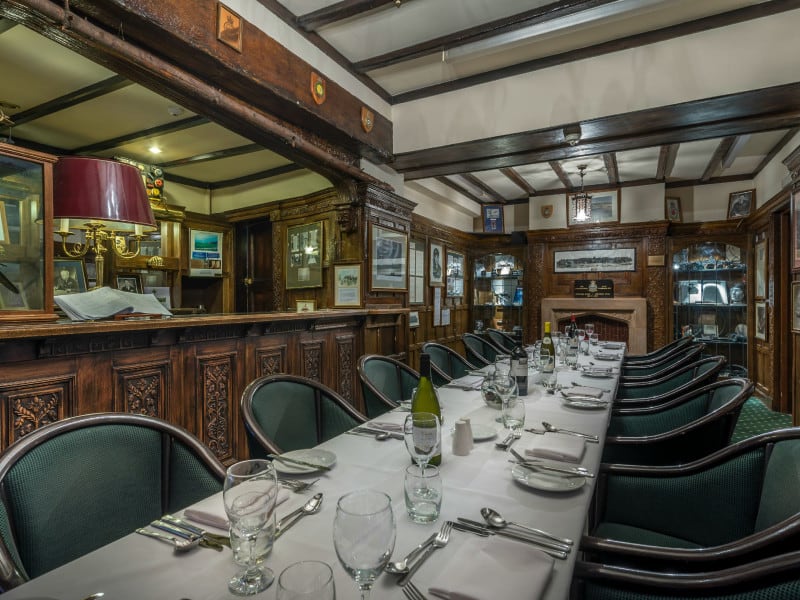The hotel building served as a military hospital for injured soldiers during the Great War complete with wards and an operating theatre, but it is as the home of the legendary 617 “Dambusters” Squadron in WW2 that the Petwood is best known. Occupied from 1942, it was originally home to officers of both 97 and 619 squadrons, but when 619 squadron moved to RAF Coningsby and 617 squadron moved to RAF Woodhall Spa the officers of 617 made the Petwood their home. Composed of Canadian, New Zealand and Australian as well as British Royal Air Force personnel, 617 Squadron were a top-secret squadron entrusted with the specific task of crippling three key German Dams.
Carried out on the night of May 17th 1943, this crucial attack was called “Operation Chastise” and utilised an ingenious “Bouncing Bomb” designed by engineer Sir Barnes Wallis. The bouncing explosive was a stroke of genius, able to be launched directly at targets before it detonated underwater, creating a “bubble pulse” effect capable of causing huge damage to enemy targets. The Squadrons badge, picturing a breached wall, and motto “Apres moi, le deluge” (“After me, the flood”) pay homage to the effectiveness of the mission.
Today, the Squadron Bar hosts a range of memorabilia and tributes to Wing Commander Guy Gibson VC, Group Captain Leonard Cheshire VC and their Officers. The Petwood was a scene of some jubilant celebrations with the breakthroughs made by 617 Squadron, as well as soul searching after tragic losses. We can only imagine the sheer bravery of the Squadron and the huge risks they took in enemy territory, facing death time and again. Guy Gibson alone, the squadron’s heroic young Wing Commander, carried out over 170 raids by the age of 24. Just two years later he was killed in action.
The squadron’s feats live on at the Petwood, which remains a fascinating testament to the Dambusters as well as all the squadrons and RAF personnel who visited or stayed over the years. Besides the attacks that destroyed or damaged the dams and industry in the Ruhr Valley, the Squadron was also responsible for the sinking of the German warship Tirpitz, which had been concealed in the Norwegian Fjords, with the new Tall Boy bomb. Alongside other squadrons, 617 squadron were also involved in raids on other key targets including bridges, shelters and canals as well as using the innovative 'Grand Slam' bomb to destroy U-boat shelters, railway bridges and viaducts in Germany. In 2010 it was also uncovered that they were being considered for a special mission to target Mussolini himself.

